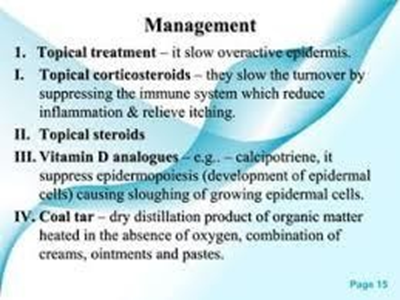The nurse is performing a physical assessment of a client. Which finding should the nurse recognize is a result of a compromised peripheral arterial circulation of the lower extremity?
Bronze pigmentation.
Lower leg edema.
Uneven hair distribution.
Bounding peripheral pulse.
The Correct Answer is C
A. Bronze pigmentation is not typically associated with compromised peripheral arterial circulation but may be seen in conditions like hemochromatosis.
B. Lower leg edema is more commonly associated with venous insufficiency rather than compromised arterial circulation.
C. Uneven hair distribution, such as decreased hair growth on the lower extremity, is indicative of compromised peripheral arterial circulation due to reduced blood flow to the area.

D. Bounding peripheral pulse is not typically associated with compromised peripheral arterial circulation but may indicate increased stroke volume or arterial stiffness.
Nursing Test Bank
Naxlex Comprehensive Predictor Exams
Related Questions
Correct Answer is ["A","B","C","D","F"]
Explanation
A. The patient’s oxygen saturation remains below the target of 94% despite initial oxygen therapy. Therefore, increasing the oxygen flow might be necessary to achieve better oxygenation.
B. Since the patient remains symptomatic with ongoing wheezes, administering another dose of the nebulizer treatment as ordered, since the prescription included PRN can help to further open the airways and alleviate wheezing.
C. Elevating the head of the bed can help improve lung expansion and ease the work of breathing, which is particularly beneficial in respiratory distress situations.
D. Switching to a nonrebreather mask may be appropriate if the patient’s oxygen saturation does not improve sufficiently with the current method of oxygen delivery. This type of mask can deliver a higher concentration of oxygen.
E. While incentive spirometry is generally used for preventing pulmonary complications (such as pneumonia or atelectasis) after surgery or in conditions where patients are likely to be immobile, it may not be immediately beneficial or a priority in the acute management of an asthma attack. The primary focus should be on stabilizing the patient’s respiratory status through medication and oxygen therapy. Thus, this option is less critical at this stage.
F. Continuous monitoring of vital signs is crucial in acute cases like this to assess the patient's response to interventions and detect any deterioration in the clinical status.
Correct Answer is B
Explanation
A. Topical antifungal agents are used to treat fungal infections, not psoriasis, which is an autoimmune condition.
B. Topical corticosteroids are commonly used to reduce inflammation and itching associated with psoriasis. They are effective in controlling symptoms and promoting healing of psoriatic lesions.

C. Topical analgesics may provide temporary relief from discomfort associated with psoriasis lesions, but they do not address the underlying inflammation and are not typically the primary treatment for psoriasis.
D. Colloidal oatmeal-based lotions may help soothe and moisturize the skin but are not specific treatments for psoriasis. They may be used as adjunctive therapy for symptom relief.
Whether you are a student looking to ace your exams or a practicing nurse seeking to enhance your expertise , our nursing education contents will empower you with the confidence and competence to make a difference in the lives of patients and become a respected leader in the healthcare field.
Visit Naxlex, invest in your future and unlock endless possibilities with our unparalleled nursing education contents today
Report Wrong Answer on the Current Question
Do you disagree with the answer? If yes, what is your expected answer? Explain.
Kindly be descriptive with the issue you are facing.
